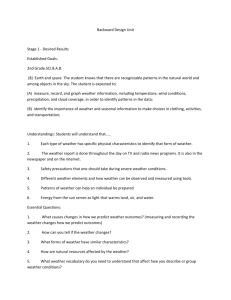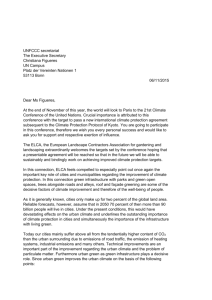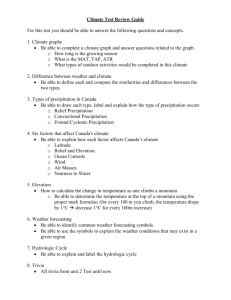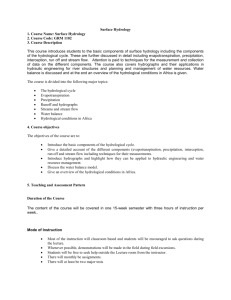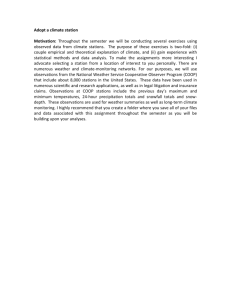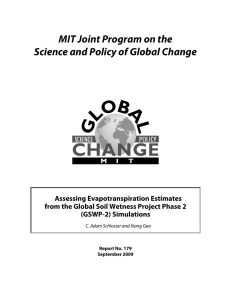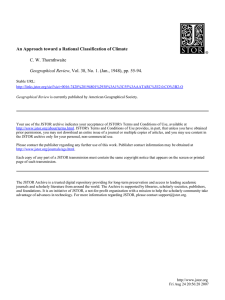Progress Report 2 - Minnesota Corn Growers Association
advertisement
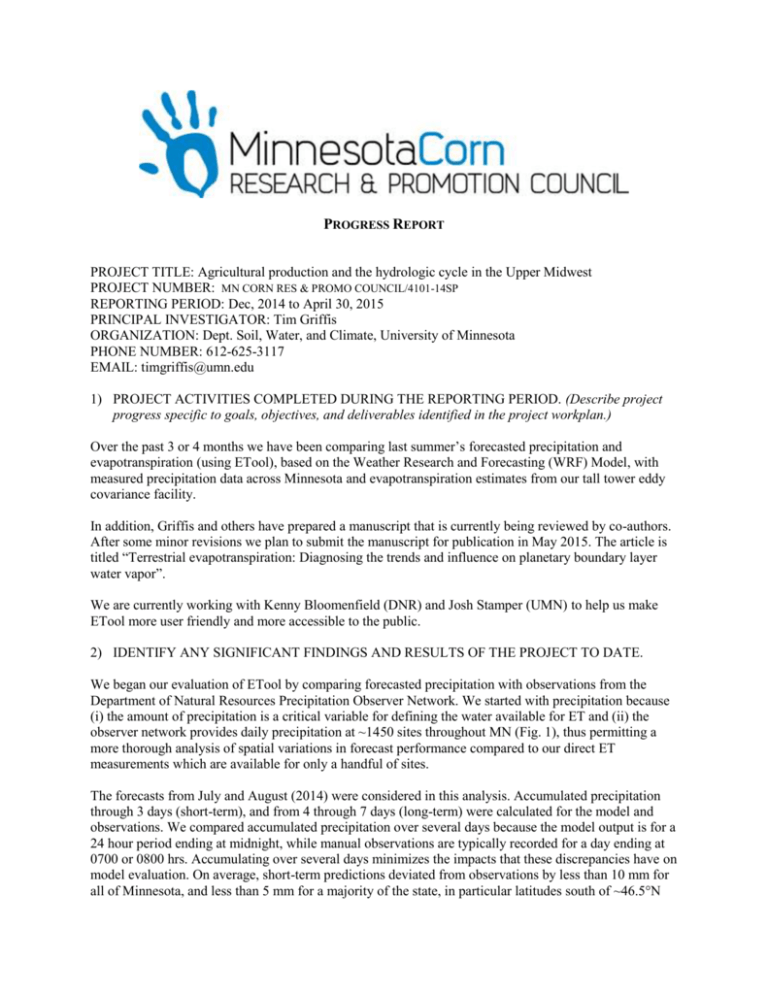
PROGRESS REPORT PROJECT TITLE: Agricultural production and the hydrologic cycle in the Upper Midwest PROJECT NUMBER: MN CORN RES & PROMO COUNCIL/4101-14SP REPORTING PERIOD: Dec, 2014 to April 30, 2015 PRINCIPAL INVESTIGATOR: Tim Griffis ORGANIZATION: Dept. Soil, Water, and Climate, University of Minnesota PHONE NUMBER: 612-625-3117 EMAIL: timgriffis@umn.edu 1) PROJECT ACTIVITIES COMPLETED DURING THE REPORTING PERIOD. (Describe project progress specific to goals, objectives, and deliverables identified in the project workplan.) Over the past 3 or 4 months we have been comparing last summer’s forecasted precipitation and evapotranspiration (using ETool), based on the Weather Research and Forecasting (WRF) Model, with measured precipitation data across Minnesota and evapotranspiration estimates from our tall tower eddy covariance facility. In addition, Griffis and others have prepared a manuscript that is currently being reviewed by co-authors. After some minor revisions we plan to submit the manuscript for publication in May 2015. The article is titled “Terrestrial evapotranspiration: Diagnosing the trends and influence on planetary boundary layer water vapor”. We are currently working with Kenny Bloomenfield (DNR) and Josh Stamper (UMN) to help us make ETool more user friendly and more accessible to the public. 2) IDENTIFY ANY SIGNIFICANT FINDINGS AND RESULTS OF THE PROJECT TO DATE. We began our evaluation of ETool by comparing forecasted precipitation with observations from the Department of Natural Resources Precipitation Observer Network. We started with precipitation because (i) the amount of precipitation is a critical variable for defining the water available for ET and (ii) the observer network provides daily precipitation at ~1450 sites throughout MN (Fig. 1), thus permitting a more thorough analysis of spatial variations in forecast performance compared to our direct ET measurements which are available for only a handful of sites. The forecasts from July and August (2014) were considered in this analysis. Accumulated precipitation through 3 days (short-term), and from 4 through 7 days (long-term) were calculated for the model and observations. We compared accumulated precipitation over several days because the model output is for a 24 hour period ending at midnight, while manual observations are typically recorded for a day ending at 0700 or 0800 hrs. Accumulating over several days minimizes the impacts that these discrepancies have on model evaluation. On average, short-term predictions deviated from observations by less than 10 mm for all of Minnesota, and less than 5 mm for a majority of the state, in particular latitudes south of ~46.5°N (Figure 1a). Biases in short-term predictions were near-zero for most latitudes in the state south of ~46.5°N (Figure 1c), indicating a lack of systematic errors. Long-term forecasts were subject to larger errors that on average overestimated precipitation (Figure 1b & d). The high degree of model skill for short-term precipitation predictions for the intensively farmed parts of the state is encouraging from the perspective of irrigation scheduling. The largest errors in the forecasts were in areas that are a mix of wetlands, lakes and forest. We speculate that model is over-amplifying water recycling in these areas. Figure 1. Comparison of WRF modeled versus observed precipitation for July and August 2014. A comparison of WRF forecasted evapotranspiration compared to our tall tower regional evapotranspiration estimate is shown in Figure 2. We find that the model tracks the observed evapotranspiration reasonably well and that major outliers appear to be associated with periods when the precipitation was biased high (i.e. too much available water leads to high evapotranspiration estimates in the model). We are currently working to identify and resolve these and other model biases. Further, new and improved ETool products will be made available to our web site beginning in May 2015 (http://www.biometeorology.umn.edu/etool.php). Figure 2. Comparison of WRF modeled versus observed evapotranspiration for the Rosemount, Minnesota Tall Tower facility for May through August 2014. 3) CHALLENGES ENCOUNTERED. (Describe any challenges that you encountered related to project progress specific to goals, objectives, and deliverables identified in the project workplan.) 4) FINANCIAL INFORMATION. (Describe any budget challenges and provide specific reasons for deviations from the projected project spending.) 5) EDUCATION AND OUTREACH ACTIVITIES. (Describe any conferences, workshops, field days, etc attended and/or publications developed to disseminate project results.) Griffis presented a talk at the American Geophysical Union Fall Meeting in San Francisco, December 2014 based on the manuscript described above. Postdoctoral student Jeff Wood and PhD student Ke Xiao have developed new modeling and analytical skills as a result of this research opportunity.



